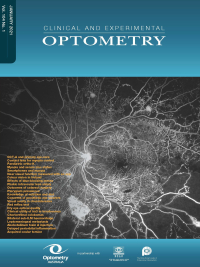The prevalence of anisometropia and its associated factors in an adult population from Shahroud, Iran
Authors
Affiliations
Abstract
Background: The aim of this study was to evaluate the prevalence of anisometropia in an urban adult population in the north of Iran.
Methods: This cross-sectional study was conducted among the 40-64-year-old population in Shahroud, Iran. Random cluster sampling was applied to select 6,311 people. Following an interview, optometric and ophthalmologic examinations, including objective non-cycloplegic refractions, were carried out. The prevalence of anisometropia was reported according to non-cycloplegic refraction and with cut-off points of 0.50, 1.00, 2.00 and 3.00 D.
Results: Of the sampled people, 5,190 (82.2 per cent) took part in the study. After considering exclusion criteria, data from 4,918 participants were included in the final analysis. Most participants were female (57.6 per cent) and the average age (with standard deviation) was 50.7 ± 6.2 years. The prevalence of anisometropia with cut-off points of 0.50, 1.00 and 2.00 D were 23.1 (95%CI: 22.0-24.3), 7.7 (95%CI: 7.0-8.4) and 3.2 per cent (95%CI: 2.7-3.7), respectively. The prevalence of severe anisometropia (3.00 D or more) was 1.9 per cent (95%CI: 1.5-2.3). The odds ratio (OR) of anisometropia was 1.06 times higher for every year of increasing age. The OR of anisometropia in participants with cataract was 2.78 times more than in those without (p < 0.001). Anisometropia was more frequent among participants with unilateral cataract (21.7 per cent) compared to those with bilateral cataract (13.4 per cent). Anisometropia of 1.00 D or more was significantly more prevalent among myopic participants compared to hyperopic participants (13.8 versus 12.7 per cent, p < 0.001) and there was a stronger association between anisometropia and myopia (OR = 2.93) than hyperopia (OR = 2.23). With increasing educational level, the prevalence of anisometropia decreased significantly (p < 0.001). The prevalence of aniso-astigmatism of 1.00 D or more was 11.1 per cent (95%CI: 10.2-11.9).
Conclusion: In the present study, the prevalence of anisometropia in Iran was not negligible; however, it is less than in Eastern Asia. Myopia, cataract, age and educational level were associated with anisometropia.
Keywords: Iran; anisometropia; cross-sectional; refractive errors.

